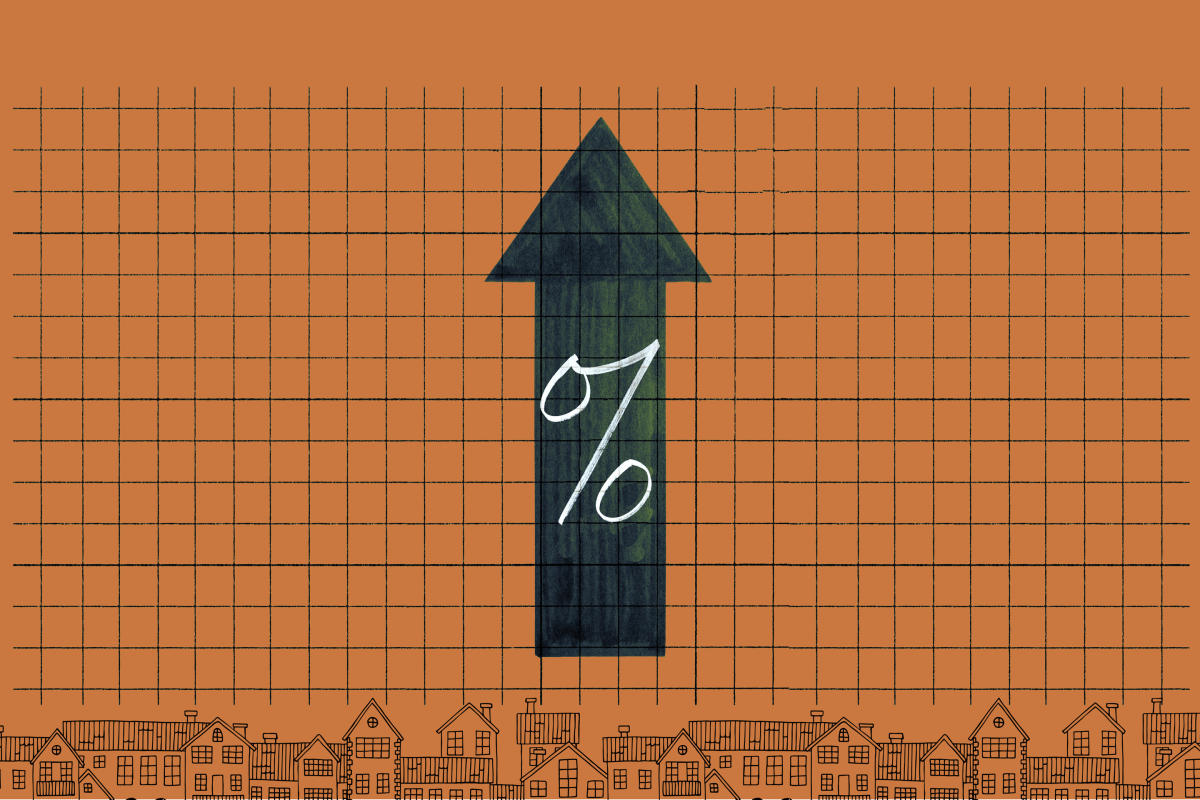Personal Finance
Mortgage Rates Creep Higher Yet Again: Freddie Mac

Homebuyers hoping for a turnaround in the recent run-up in the cost of borrowing will have to wait a while longer. Mortgage rates have increased for the fourth consecutive week. The housing market, which in January had shown signs of awaking, now seems to be heading back into hibernation.
The average rate for a 30-year fixed-rate mortgage moved up to 6.65%, according to Freddie Mac. The rate increased by 0.15 percentage points over the last week. That’s a smaller hike than those of the previous two weeks. Still, after dropping almost a full percentage point in January, the 30-year rate has steadily climbed back up by more than half a percentage point.
The average rate on a 15-year fixed-rate loan also increased this week, moving up by 0.13 percentage points to 5.89%.
The higher mortgage rates are taking their toll on would-be homebuyers, according to a Freddie Mac spokesman. “Now that rates are moving up, affordability is hindered, making it difficult for potential buyers to act,” said Sam Khater, Freddie Mac’s chief economist, in a press release.
The impact has been evident in the decreasing number of people applying for a home loan. The total number of mortgage applications was down by nearly 6% for the week ending February 24, according to the Mortgage Bankers Association.
Purchase applications decreased by a seasonally adjusted 6% from the previous week, reaching the lowest volume of applications in 28 years.
“Purchase applications were 44 percent lower than a year ago, as homebuyers again retreat to the sidelines as higher rates crimp affordability,” said Joel Kan, vice president and deputy chief economist at the MBA, in a press release.
And relief may not be in sight anytime soon, some analysts predict. Indeed, with fears that inflation may be harder to tame than originally thought, mortgage rates may soon move up close to or even past 7%, said George Ratiu, senior economist at Realtor.com, in a statement. Just a few weeks ago that prospect seemed unlikely.
Mortgage rates climb as economic concerns mount
Hopes that the overheated economy might cool continued to fade this week as economic data pointed to a continued rise in inflation.
A report released last Friday showed that the personal consumption expenditures price index rose by 0.6% in January, which is three times the hike reported in the December report. it was also higher than the 0.5% increase expected by financial analysts. Compared to last year, the PCE index has increased by 5.4%.
“Data on inflation, employment and economic activity have signaled that inflation may not be cooling as quickly as anticipated, which continues to put upward pressure on rates,” said Kan.
The PCE price index, also known as “core inflation,” is the Federal Reserve’s preferred inflation measure. Unlike the alternative measure, the consumer price index, the PCE measures what consumers are actually buying. That yields a more accurate picture of consumer spending.
Combined with the higher-than-expected CPI data released earlier in February, the report points to an actual increase in the rate of inflation during the first month of the year. Combined with a strong January jobs report and an increase in consumer spending, the economy has yet to slow down enough to satisfy the Fed’s concerns over inflation.
As a result, analysts are now trying to gauge whether the Federal Reserve will increase the federal funds rate beyond its current target range of 4.50 to 4.75%, perhaps even to as high as 5.25% or higher. There’s also concern about how long the Fed will have to keep it elevated in order to bring consumer prices back down to an acceptable level.
The fed fund rate is the short-term interest rate banks charge each other for overnight loans. Changes in this rate will produce a corresponding change in the rates charged on all types of consumer credit, from personal loans to credit cards and mortgages. If the federal fund rate increases, so too will mortgage rates.
The Fed uses these rate hikes as a tool to increase the cost of borrowing money and thereby slow down consumer spending, leading to lower prices. The central bank wants to bring inflation back down to 2%.
Market observers, who had been fairly confident of a 0.25 percentage point increase in the fed fund rate at the next Fed meeting in March, are now leaning more toward the possibility of a 0.50 percentage point hike. Regardless of the size of the increase, the effect will be felt across the economy.
“With rising interest rates, financial burdens are expected to increase, making consumer choices more difficult in the months ahead,” said Ratiu.
More from Money:
Best Mortgage Lenders of 2023
Mortgage Calculator by Money
How to Get the Lowest Mortgage Rate: A Step-by-Step Guide
© Copyright 2023 Money Group, LLC. All Rights Reserved.
This article originally appeared on Money.com and may contain affiliate links for which Money receives compensation. Opinions expressed in this article are the author’s alone, not those of a third-party entity, and have not been reviewed, approved, or otherwise endorsed. Offers may be subject to change without notice. For more information, read Money’s full disclaimer.
Read the full article here

-

 Side Hustles7 days ago
Side Hustles7 days ago5 Myths About Young Shoppers and How Retailers Can Reach Them
-

 Passive Income5 days ago
Passive Income5 days agoThe One Microsoft Design Tool Business Owners Shouldn’t Miss
-

 Investing7 days ago
Investing7 days agoU.K. stocks lower at close of trade; Investing.com United Kingdom 100 down 0.07% By Investing.com
-

 Investing7 days ago
Investing7 days agoWant Your Workers to Be More Productive? You Need a Better Way to Measure Their Contributions
-

 Side Hustles7 days ago
Side Hustles7 days agoTake Control of Your Projects for Life for Just $79.97
-

 Side Hustles3 days ago
Side Hustles3 days agoThe DOJ Reportedly Wants Google to Sell Its Chrome Browser
-

 Side Hustles6 days ago
Side Hustles6 days agoHoliday Savings: Get a MacBook Air for $250
-

 Passive Income7 days ago
Passive Income7 days agoHow to Build a Lasting Career in the Creator Economy


















